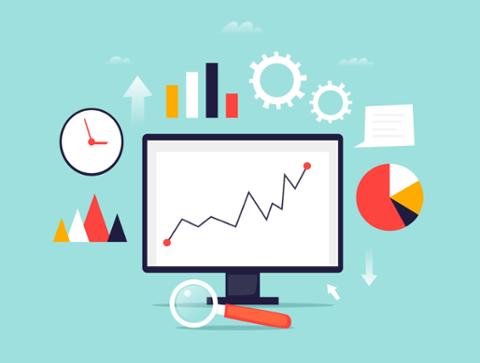Regardless of the role you play in an organization, having the ability to convert raw data into actionable insights is fast becoming a must-have skill for growing your career. In fact, 60 percent of organizations want their senior leaders to have data-analysis skills, according to the Harvard Business Review; and data from the World Economic Forum suggests that contributing to strategic business decisions will turn you into an indispensable member of any team. To help you start building the right mindset and skills, several experts agreed to share their strategies and tips for turning data into actionable insights.
Don’t Make Things Too Complicated
Every company or business unit has problems that need to be solved, or things that can be improved. Look for an opportunity to reduce costs, drive efficiencies or meet evolving customer needs, and prepare a set of relevant questions that will generate insights and decisions through analysis. “You don’t need to use R or Python to perform basic analysis tasks,” noted Carla Gentry, a veteran data scientist for Design Interactive. Start with Excel or simple tools to uncover insights, patterns and trends; converting a few rows of data into a chart can quickly reveal unexpected things about the business. Don’t worry about getting it right the first time. Accept your mistakes and improve, she said. Eric Chun, VP & strategic analytics director at Foote, Cone & Belding Chicago, pointed out that having breadth of expertise is vital for drawing insights that deliver business value. In other words, if you have business-domain knowledge, communication skills and basic technical expertise, you have everything you need to get started with data analysis.
Work With What You’ve Got
There’s no such thing as clean data, Gentry stated emphatically. “Data is messy,” she noted. “There are bound to be holes, gaps and imperfections. And because the most useful data for solving business and marketing problems is often collected from webpages and symbols like hashtags, you have to be able to work with what you’ve got.” The good news is that the underlying information does not have to be perfect to provide useful insights, as long as you keep a few things in mind. For instance, understand where the data comes from and determine which sources will be most useful in solving your problem. Also, don’t make assumptions about the quality or completeness of the data; scroll through each data set and verify that everything is correct, (relatively) clean, and useful. “Always perform a visual inspection of the raw data because large gaps or missing data need to be considered when making observations or drawing conclusions,” Gentry advised. Finally, be careful when filling in the blanks or
handling missing values in machine-learning data sets, as such things may produce a biased conclusion. To be on the safe side, always apply “common sense” to the insights you've gleaned from the data before recommending actions.
Sell Your Ideas Effectively
Even a great idea can’t survive a bad presentation. Unfortunately, many new (and even experienced) analysts fall short when they reach this part of the process, because they
lack the ability to sell their ideas to stakeholders in a confident, concise and effective way. “If you can’t tell a story without charts, graphs and PowerPoint slides, you don’t have a story,” Chun said. “You must learn to condense a story into a one-line soundbite that will resonate with your audience.” Don’t use data as a crutch, or review all the steps in your analysis process during presentations, either. Ask yourself: What does the information ultimately mean? How do your conclusions and results tie back to the original business problem? What point are you trying to make? You’re crafting a narrative that should instantly resonate with your target audience. A good analyst has to be able to present in a way that everyone can understand (and practice makes perfect).



